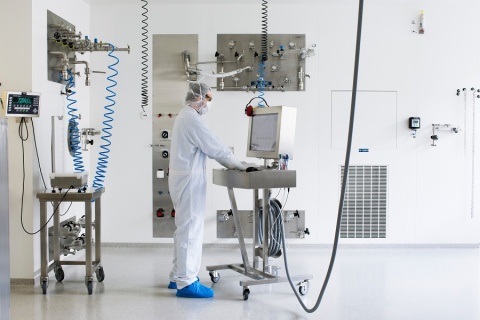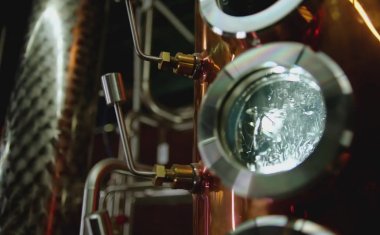Improving ADC Production and Purification

Antibody-drug conjugates (ADCs) are a rapidly growing class of drugs consisting of a monoclonal antibody (mAb) attached to a cytotoxic drug via a linker. The number of new ADC trials has increased massively in the last two years, and the market for ADCs is expected to grow significantly. According to a 2023 report by Beacon, at the end of 2022 there were almost 1400 active ADC trials, 255 of which started last year. Another recent report estimates that the worldwide market for ADCs could reach $23.9 billion by 2028 and could grow annually at 23.7%1. However, market growth is dependent on being able to efficiently manufacture ADCs to produce sufficient commercial scale supply at a cost of goods which ensures these drugs will be widely available, as well as affordable.
ADC manufacturing is a complicated and expensive process, which requires trained scientists who can operate safely and effectively under challenging and hazardous process conditions to comply with Good Manufacturing Practice (GMP) regulations. With around 70% of ADC projects outsourced to contract development and manufacturing organizations (CDMOs)1, it is vital to choose a CDMO that has extensive expertise in process development and that can help with scale up to supply material for early phase clinical studies right through to commercialization.
One common method of manufacturing an ADC is by cysteine conjugation which requires three steps. The first is a reduction reaction to make thiol groups available for binding to the cytotoxic drug-linker molecule. Second is a conjugation step to add the cytotoxic drug-linker molecule, and finally a quenching step to prevent any unwanted side reactions. This process typically produces a mixture of ADCs with even variable drug-to-antibody ratios (DAR), ranging from 2 to as high as 8. This production process makes downstream processing particularly difficult as it involves trying to remove unreacted cytotoxic drugs and process impurities while trying to retain an ADCs’ critical quality attributes (CQAs) such as high monomeric purity and optimum DAR species.
Therefore, even at laboratory scale it is important to develop production and purification processes which consider how to control an ADC’s CQAs, as well as uses efficient yet scalable purification techniques and an analytical toolbox that is appropriate for use in a GMP environment. At manufacturing scale, purification must adhere to robust safety procedures, which meets regulatory guidelines. The process must also work to specific and often challenging timelines, for example after a successful Investigational New Drug (IND) filing, sufficient clinical grade material must be delivered in a timely manner for generating safety and efficacy data in first human trials. The starting point for developing such conjugation and purification processes for transfer from laboratory to manufacturing scale is to identify which process conditions would benefit from optimization. The following case study details which process conditions and protocols were chosen as optimization targets, as well as the resulting improvements to ADC production and purification that assessing these parameters provided.
To read the case study, click here.

_____________________
References
1 Antibody Drug Conjugate Market Size, Share & Trends Analysis Report by Application (Blood Cancer, Breast Cancer), By Technology (Cleavable Linker, Linkerless), By Region, And Segment Forecasts, 2021 – 2028. Published 2021. https://www.grandviewresearch.com/industry-analysis/antibody-drug-conjugates-market Stephen J. Walsh S.J. et al. Site-selective modification strategies in antibody–drug conjugates Chem. Soc. Rev., 2021, 50, 1305-1353. https://doi.org/10.1039/D0CS00310G













